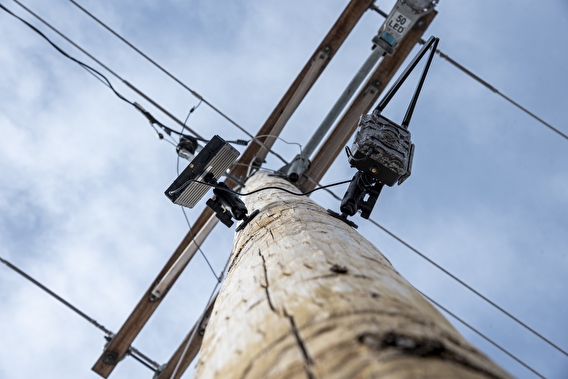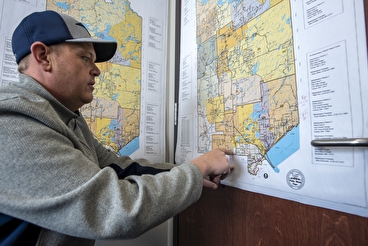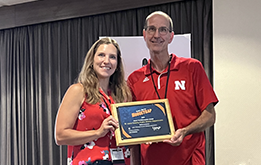
way to monitor road conditions and manage responses.
Traditional methods of evaluating road conditions can be costly and time-consuming, making them difficult to deploy countywide on a limited budget. Thanks in part to a grant from the Local OPERA Program, the St. Louis County Public Works Department implemented a remote camera network to monitor road conditions and manage responses over its 6,800-square-mile area.
The $20,000 OPERA grant helped the county identify a suitable remote-monitoring camera and evaluate its performance in the field as part of a winter weather monitoring system.
The original plan included the installation of four remote cameras capable of providing real-time images of current road conditions with air temperature data. The cameras also needed to be durable and function reliably in winter conditions.
The research project team chose the relatively low-cost and sturdy Barn Owl camera system, which can capture still images and short video clips day and night. An optional solar panel decreases service intervals and improves cold-weather performance.
The team scrapped plans to install hinged mounting poles and instead mounted the cameras on existing structures—and used the unspent money to buy 47 more cameras.
The cameras are compatible with virtually any cellular network currently available and are capable of being remotely operated from the Barn Owl website. Once triggered, the camera captures an image of current conditions along with the current air temperature. This image is then uploaded to the Barn Owl website, making it possible to group and archive images.

St. Louis County worked through a variety of issues with the Barn Owl team. “Because St. Louis County has such a large network of cameras, it became apparent that efficiently sorting and classifying the cameras was going to be an issue that needed to be addressed,” says Brian Boder, the county’s deputy public works director for maintenance operations. Barn Owl gave the county the ability to classify each camera by location and district. This, in turn, provides the opportunity to create groups, making retrieving the desired image and location as efficient as possible.
Other modifications allowed the county to have multiple users logged in under the same account and select the level of access on a case-by-case basis. “This has been a huge help rolling out this program to our supervisors,” Boder says.
The extensive camera network offers a number of benefits. For example, it allows the county to identify microclimates or areas where weather conditions seem to change more frequently and check on remote locations that are difficult to access. Total project cost was $27,612.
“This camera system has the potential to assist any agency or municipality with the decision-making process regarding level of response and deployment timing to winter storm events,” Boder says. “In turn, this will ultimately lead toward safer roads for the traveling public at significantly less cost.”
Project receives National Mousetrap Award

receives a National Mousetrap Award from Joe
Conway, director of the FHWA Center for Local
Aid Support.
St. Louis County received the National Build a Better Mousetrap “SMART Transformation Award” for its Remote Camera Installation project. The award was announced at the National LTAP & TTAP Association annual conference in July.
All OPERA and Minnesota Mousetrap projects are entered into the FHWA’s National Mousetrap Program, where they compete with other projects from across the country each year.
In his notification to the county, FHWA’s Joe Conway wrote this: “We celebrate your agency’s commitment to improving emergency response through the use of more immediate and accurate data. Your innovation not only improves transportation performance, it is also a transferable solution that can help other agencies become more efficient in this area.”
Learn more: